Diagnostics can be largely enhanced and refined with the use of dealership-caliber scan tools. When repairs are imminent and the work setting right, advanced diagnostic tools and scanners provide the edge. Off-pavement and far from services, however, some simple tools can help. The quick checks that you can perform at home or afield are also popular with both dealership and independent professional technicians.
There are times when the actual voltage value or draw of a device is not as important as simply getting your Jeep back to a paved road. Toward that end, the tools and steps shared here will be beneficial. These tools do not provide the degree of accuracy that a scan tool offers; however, they do show quickly whether the fuel-and-spark management system is functional. The tools are compact, simple to use and inexpensive—just right for your backcountry, trailside toolbox!
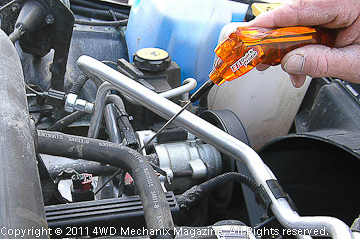
Fuel injector firing is critical! The W-76400 EFI Quick Probe is a popular tool in the “Vehicle Checkup Center” program at Jeep dealerships. Touch the probe end against the injector body—no need to disconnect plug leads—and the self-powered LED light will flash with each pulse of the injector. Compare injectors and watch for intermittent pulsing. Even on a trail after dark, this device will quickly indicate whether the injectors function.
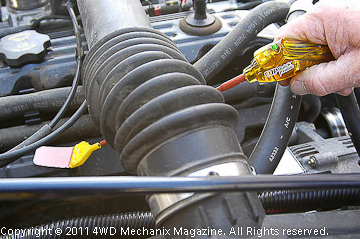
The W-76560 Coil-on-Plug (COP) Quick Probe is another tool that saves time and provides immediate information about ignition function. Simply lay the probe tang against the coil-on-plug unit. The spark will trigger the probe’s bright LED light. A green LED will flash if there is sufficient “Arc Duration.” This tool will indicate whether a spark plug is actually firing consistently and with sufficient kilovolts.
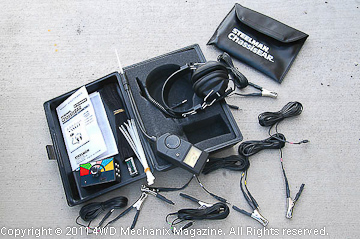
The professional technician must find answers to difficult problems. SL-6608 Combo Chassis Ear®/Engine Ear II® tool also serves the ‘Vehicle Checkup Center’ program at your local Jeep dealership. Six channels of amplified sound and a headphone set enable pinpoint diagnosis of engine noises and, importantly, fuel injector firing. The combined package will serve chassis, brake, engine, gear and rattle checks.
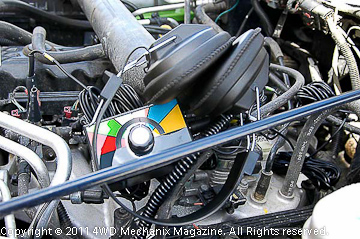
Six channels enable me to hook an Engine Ear II clip at each injector position on the fuel rail. I can hear an injector fire on each channel, compare sounds, listen for misses and even hear the duller click of a sooty injector! This is also a useful tool for road tests to determine chassis, brake, transmission, transfer case and differential noises. Chassis Ear and Engine Ear tools eliminate guesswork when checking for rattles, squeals, grinding noises, knocks, clicks or sources of vibration.
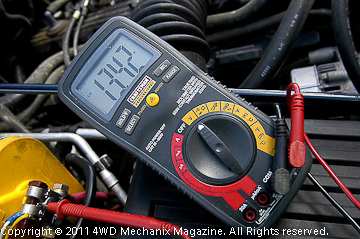
Digital volt-ohmmeter in the 1/1000ths ohm and volt scales will read suspected devices accurately. Once a DTC code comes up, the volt-ohmmeter is the tool of choice, portable and able to test everything from fuel injectors to coolant sensors and coil units. I purchased this tool from Sears, and the device will even probe temperature from a distance, accurately pinpointing the heat of devices or areas of the engine. Temperature comparisons can be a troubleshooting aid.
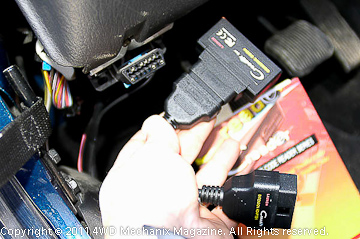
Code readers are inexpensive and useful. Equipped with a DTC code chart and knowledge of MPI and sensor devices, you can narrow the trouble source. This code reader can quickly pull any stored PCM codes through the 16-Way OBD-II Data Link on this XJ Cherokee. A generic 1996-up OBD-II code list comes with the reader. OBD-II began with all 1996 Jeep models. (No YJ Wranglers were sold as 1996 models.)
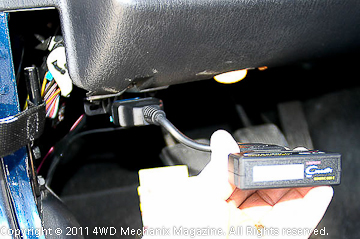
Once the DTC fault is identified and repaired, this inexpensive code reader can erase the stored code. You can then operate the system to see if the code reappears. If not, you have made the correct repair. This tool will fit in your backcountry tool box. The 16-Way Data Link plug is common to most OBD-II diagnostic systems.
These companion tools are not difficult to tote about. I safely stow and carry the probes, code reader and volt-ohmmeter in my toolbox for extended backcountry travel. The Engine Ear and Chassis Ear tools work nicely at the shop or home garage, turning up odd noises that may develop from a twisty trail or washboard road trip.
It is reassuring to know that despite the sophistication and value of PCM diagnostics, one can still perform a simple test like, “Does it fire?” On a rough, isolated trail in threatening weather, you can postpone the in-depth diagnostics procedures for when your family is safely at home.
